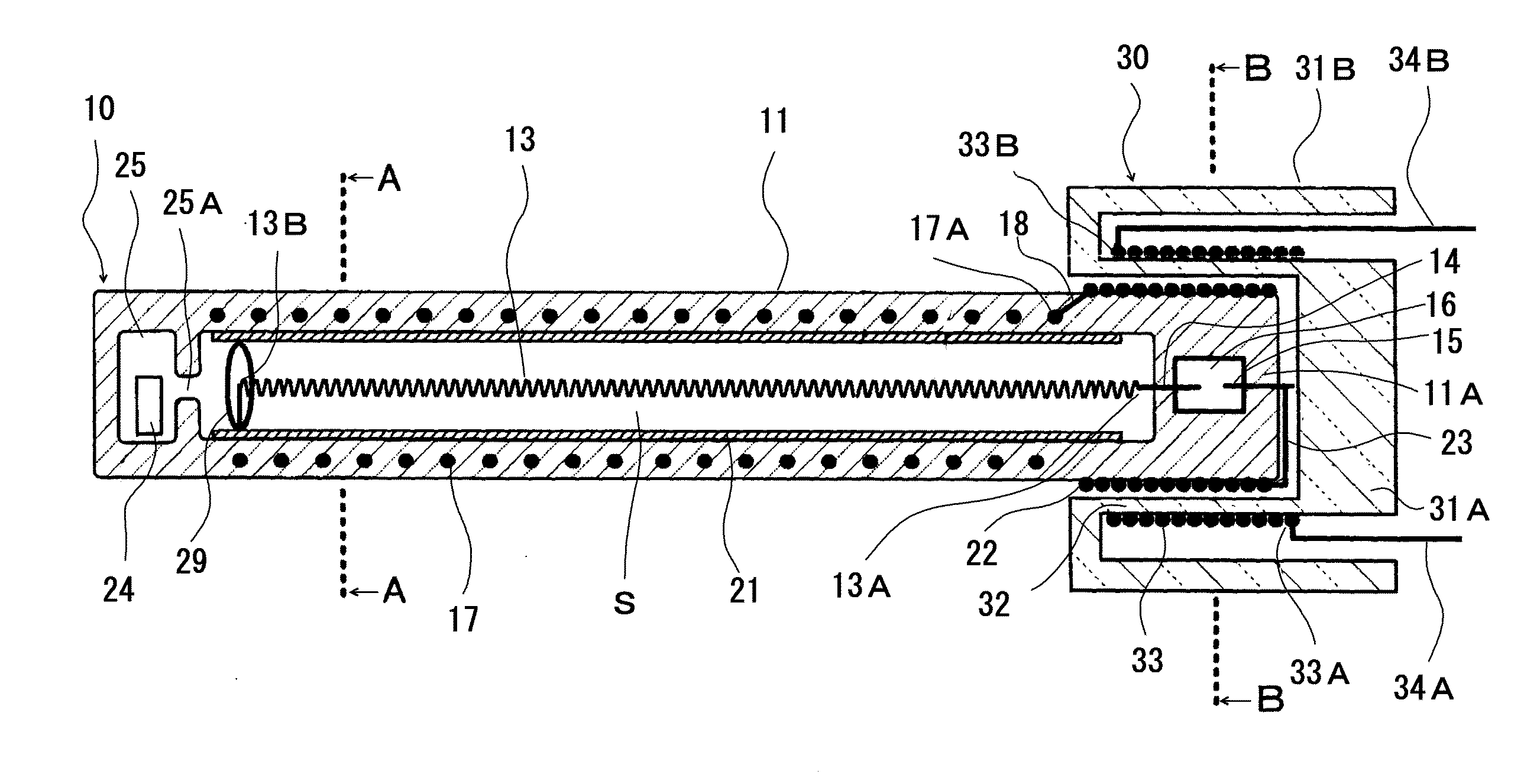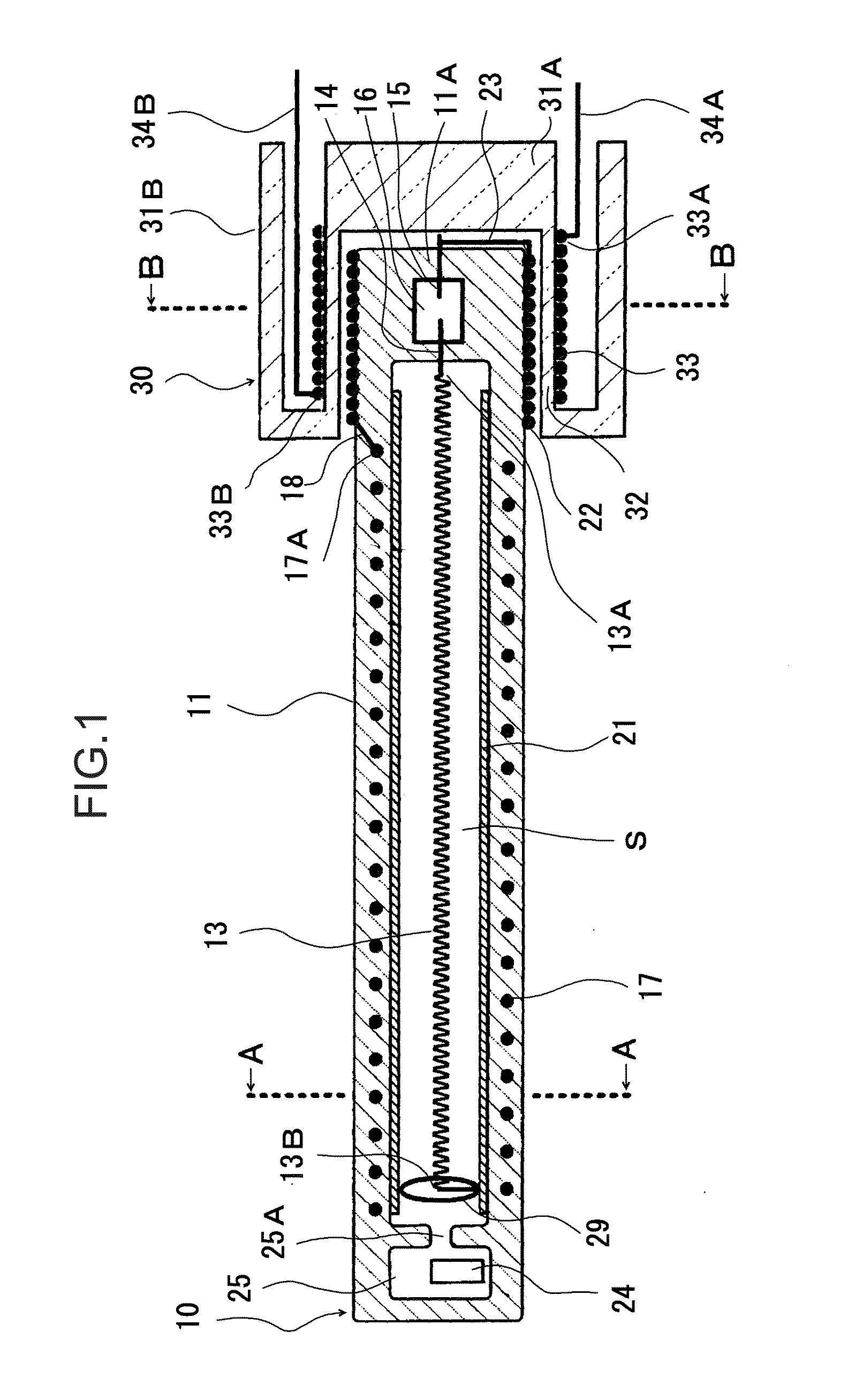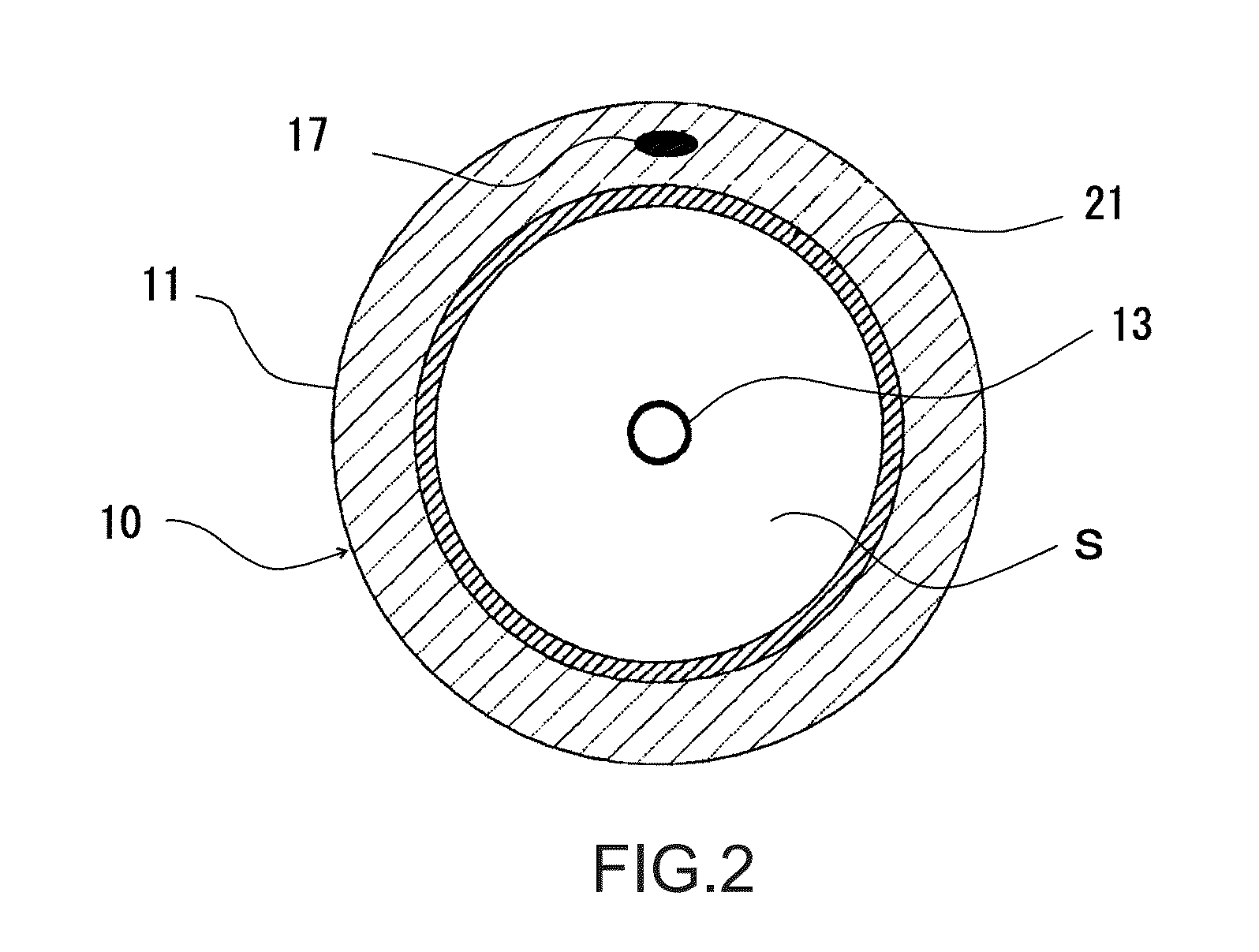Excimer lamp
a mercury lamp and excimer technology, applied in the field of excimer lamps, can solve the problems of large influence on the light-emission characteristics of low-pressure mercury lamps, insufficient light emission, corrosion of external electrodes, etc., and achieves long service life, high safety, and large capacitance
- Summary
- Abstract
- Description
- Claims
- Application Information
AI Technical Summary
Benefits of technology
Problems solved by technology
Method used
Image
Examples
experimental example 1
[0317]First, a third excimer lamp having the configuration in FIG. 14 (this third excimer lamp may hereinafter be referred to as an “excimer lamp (1)”) was produced.
[0318]In the produced excimer lamp (1), the light-emitting tube 91 had an outer diameter of 18 mm, an inner diameter of 16 mm and an overall length of 200 mm, and the cylindrical tube 92 had an outer diameter of 4 mm, an inner diameter of 2 mm and an overall length of 170 mm. The conductive foils 93A and 93B were each a molybdenum foil.
[0319]The coil-shaped electrode constituting the first electrode 96 was formed from a tungsten wire having a wire diameter of 0.36 mm and had an outer diameter (coil outer diameter) of 2 mm, a coil pitch of 4.7 mm and an overall length of 150 mm.
[0320]The coil-shaped electrode constituting the second electrode 97 was formed from a tungsten wire having a wire diameter of 0.36 mm and included: a large-diameter portion 97A having an inner diameter (coil inner diameter) of 14 mm, a coil pitch ...
PUM
 Login to View More
Login to View More Abstract
Description
Claims
Application Information
 Login to View More
Login to View More - R&D
- Intellectual Property
- Life Sciences
- Materials
- Tech Scout
- Unparalleled Data Quality
- Higher Quality Content
- 60% Fewer Hallucinations
Browse by: Latest US Patents, China's latest patents, Technical Efficacy Thesaurus, Application Domain, Technology Topic, Popular Technical Reports.
© 2025 PatSnap. All rights reserved.Legal|Privacy policy|Modern Slavery Act Transparency Statement|Sitemap|About US| Contact US: help@patsnap.com



